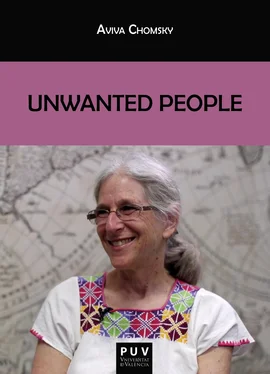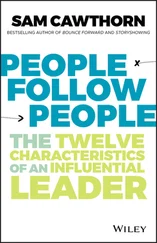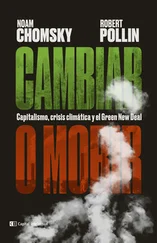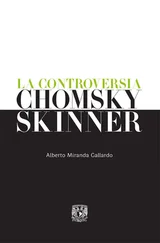Medical Resources
A small group of Medical Resources workers resentful about low and unpredictable pay sought the help of the CPA. “And so we started this campaign with just a few workers... saying they're very unhappy, and we start writing letters to the company, and saying I want to know what the pay is. How do you determine, to get a raise, I want to see what is your policy for travel pay, because some people get more, some people get less. And then we started with that. And then the worker core started growing from 4-5 people to about a dozen, and then eventually we had 20 or 30 workers.”
It took a while for the protesters to decide to turn their campaign into a union organizing drive. Chen understood the workers’ reluctance, but also wanted to challenge it: “Whenever a union campaign, the thing that people like to do the most is to say ‘oh, the union just wants your dues,’ and they would criticize unions, saying then your voice is not going to be heard.” Thus “we did not talk about a unionizing at all, throughout. But we were working with 1199, they were doing some research, and feeding information about what do we think, realistically, what the workers can fight for? And also learning more about the industry, the structure, where the money is coming from, goes to who, who are the decision-makers, and things like that... And eventually the workers are like well, you know what, let's do a, let's have a union drive.”
Many of the workers were also dubious about SEIU’s efforts to mobilize them for the Massachusetts Fight for 15 campaign. Recounts Chen: “I start talking to the workers about it, and they're like, ‘I don't know, this is Fight for Fifteen, I don't know if we can get fifteen, you know, like, we're just asking for Boston's living wage, which at the time was $13.67, and that's already we think that's probably impossible,’ right? But after we send them a first petition, they gave everybody who signed the petition 45 cents increase! And then I was like, well, that happened, like that means that they can pay you more, right? But they only gave it to the people who signed the petition.” The company’s concession emboldened workers further, as did the June 2015 state decision on wages for home health workers paid by the state.
Just a few days after SEIU’s wage victory for state-employed home health workers, the Medical Resource workers won a hard-fought union election. 42 In September 2016, workers ratified their first contract with the agency. They won significant pay raises—though not enough to bring them up to the level of the state’s Medicaid-reimbursed workers—as well as paid leave days and compensation for travel time and waiting time between appointments. 43
The CPA served as a crucial bridge between the union and the many Chinese health care workers. While SEIU had organizational resources and state-level clout, the CPA, as an ethnic social justice organization, had the deep roots in the community. “One of our big constituencies that we organize is the elderly. And the elderly, we start telling them about the home care campaign, we're trying to reach out more, to more home care workers. And they start asking their home care workers to contact CPA.”
CPA’s collaboration with SEIU brought some significant victories. Chen reflected on the different, but potentially complementary, nature of the two types of organizations. “Some of [people’s criticisms of unions] may be true, but all in all, if you work in a blue-collar industry, that's the best you can get. And this is how actually you can have the most influence, right? And build the most power. So anyways, because of that we did publicity in the community.”
Not all analysts are sanguine about the home health sector victories. The very strengths of social movement unionism could be perceived as weaknesses from the perspective of the labor movement. Leon Fink and Brian Greenberg argued that “home care, the biggest growth area for organizing in recent years, accentuated a tension already manifest in other ways between union leadership and its rank and file. More than any other organizing battles, home care campaigns have been waged and won through the mobilization of media, church, and political allies more than through the self-organization of the workers themselves . The tangible gains from such campaigns... tend to turn the union political staff (themselves mostly young, college-educated professionals) into a kind of stand-in or steward for the poorly paid immigrant and minority members for whom they serve as advocates.” Moreover, to the extent that home health care workers are paid through Medicare and Medicaid, these campaigns are vulnerable to the critiques levelled against public sector unions, insofar as taxpayers employed in the non-union private sector see their gains as an affront rather than a way of raising the floor for all. 44 Yet Chen’s experience, as well as that of other Boston worker center staff, suggest that in immigrant communities many of the college-educated staff share not only ethnicity, language, and culture, but also experiences of undocumentedness and low-wage, precarious labor, with the workers they seek to organize.
Undocumentedness and the challenges of organizing
In addition to issues of labor market structure, immigrant status itself brings particular challenges to labor organizing. Historically, immigrant workers’ home-country orientation and short-term goals sometimes made them less likely to protest working conditions and wages that natives would consider to be intolerable. Many of Boston’s recent immigrants share this home-country orientation, while also facing new issues that emerged in the late twentieth century related to immigration status and undocumentedness. Laws, policies, and enforcement have increasingly made workers’ status unstable and fragile. Undocumentedness can divide workers, and can pose very real and concrete obstacles to labor organizing, especially in the Trump era. But immigrant rights can also serve as a key organizing issue for immigrant workers, as evidenced by the huge mobilizations in 2006 and 2017 that linked labor and immigrant identities. 45
For immigrant and especially undocumented workers in Boston, immigration status is utterly central to their identity and position as workers. But their status brings with it an array of obstacles to labor organizing. Gladys Vega of the Chelsea Collaborative described a 2012 case at Boston Hides and Furs, a Chelsea animal hides processing wholesaler that was paying immigrant workers well under minimum wage. “We called a meeting with them, it took us a little bit hard to get them organized, because they were so fearful about immigration. And they were so fearful about our organization, although some of them know Chelsea Collaborative, but when it comes to talking about their work conditions, they were like, no, they're gonna call immigration, like they were in panic about seeking help.” With support from Greater Boston Legal Services, the U.S. Department of Labor ultimately sued the company and obtained $825,000 in back wages for 14 employees—with no immigration status retaliation.
While worker centers emphasize that they support workers regardless of their immigration status, the immigrant community itself is far from united with respect to the rights of the undocumented. Says the CPA’s Karen Chen: “so our community is quite divided, on whether or not you support the undocumented. Because the people who came here what they call "the right way", right? And they say "well, I had to wait for 15 years for my family to be reunited, and the people who come in undocumented are cutting the line! Why should we give them the right to do that? Doesn't it encourage more people to come in? That's kind of like the general entire undocumented narrative within the community. And for us, in the workers center, the way that we have been able, every meeting sometimes international women's day, we always have this discussion around ‘why would it be important to not have a second class citizen, because they will be like second class workers. And that actually jeopardizes the rights of all workers.’” 46
Читать дальше












